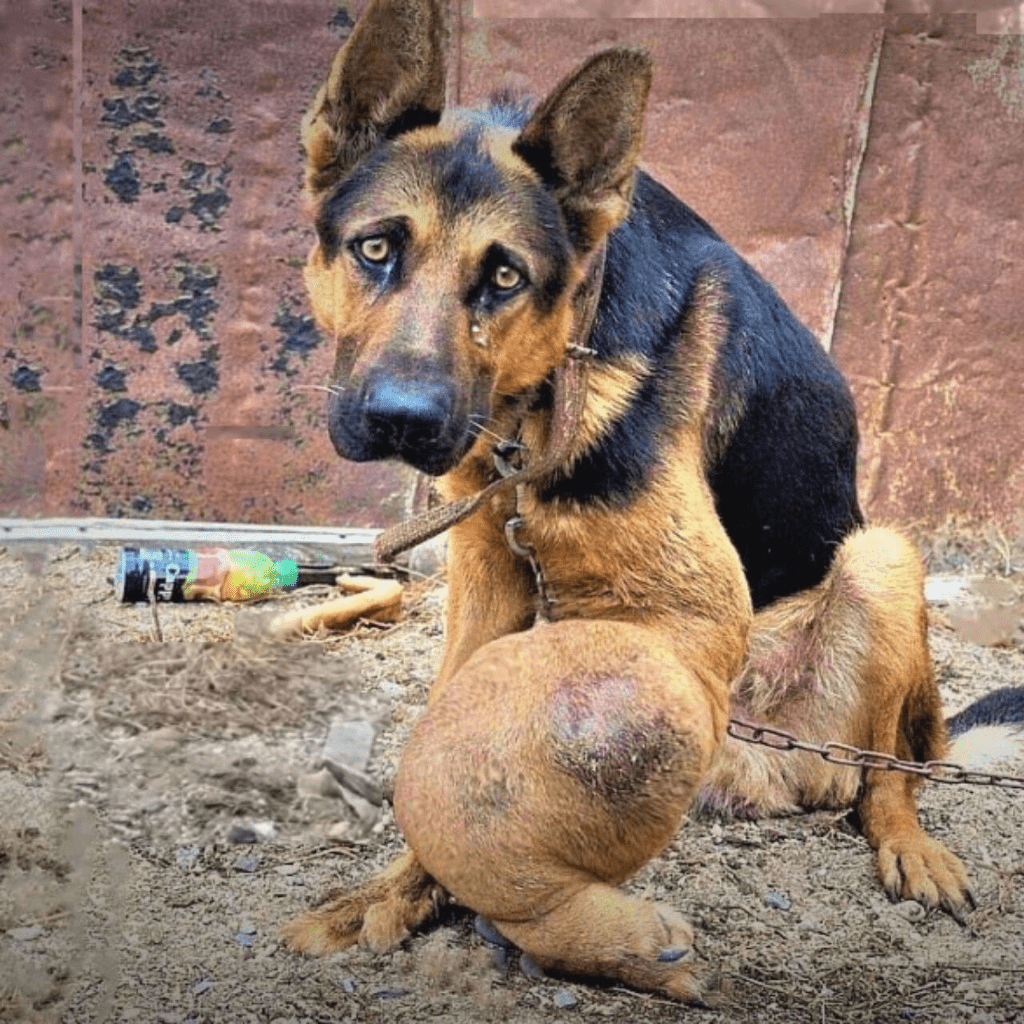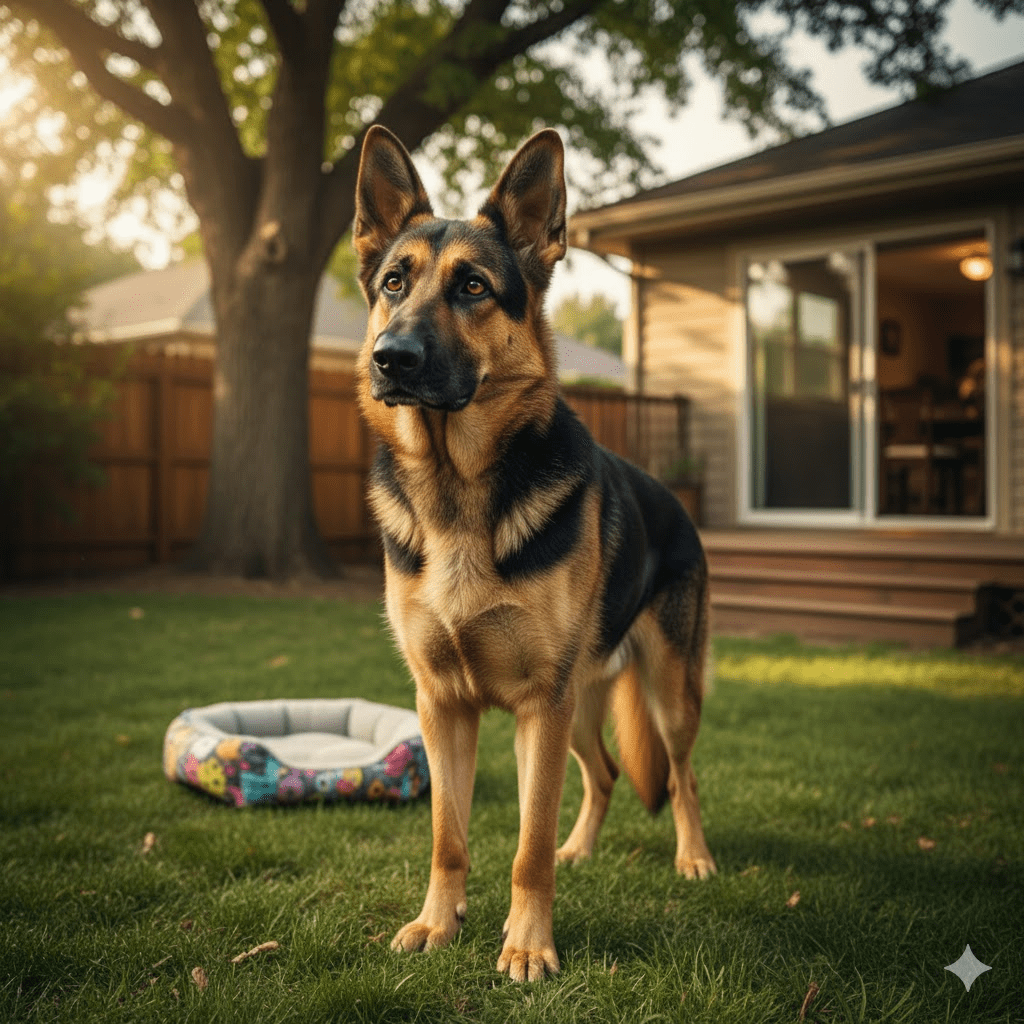The chilling wind bit at the exposed skin of anyone brave enough to venture down the forgotten alleyways of the city, carrying with it the metallic tang of neglect and despair. It was in such a place, a forgotten nook beneath a collapsing corrugated iron fence, that Jordan was found. Not the Jordan of today, the symbol of resilience and hope, but a shadow of a dog, a German Shepherd whose once regal posture had been cruelly twisted by an enormous, grotesque mass on his front leg.

The tumor, a cancerous affliction that had silently, insidiously taken root, had swollen to an alarming size, rendering his limb practically useless and casting a dark pall over his expressive, sorrowful eyes. He was tethered, not by a leash of care, but by a rusty chain that spoke volumes of his previous existence—an existence marked by abandonment, suffering, and the creeping certainty of an agonizing end. The image of him, gaunt and broken, yet with a spark of defiant life still flickering in his gaze, was enough to stir even the most hardened observer. This was not just a sick dog; this was a testament to enduring hardship, a silent plea for a second chance that few believed he would ever receive.

The call came into the local animal rescue late one blustery evening. A hushed voice, tinged with urgency and compassion, described a German Shepherd in dire straits. The rescue team, accustomed to heartbreaking cases, steeled themselves for what they might find. What greeted them, however, was far more shocking than anticipated. Jordan lay almost lifelessly, his eyes tracking their every move with a mixture of fear and a faint, almost imperceptible flicker of hope. The air around him was thick with the stench of infection and neglect. As they carefully approached, the enormity of his condition became chillingly clear: this was not merely a large growth, but something far more sinister. The team knew instantly that this was a race against time.

Upon arrival at the emergency veterinary clinic, Jordan’s prognosis was grim. The initial examination revealed not just the visible tumor, but also severe malnourishment, dehydration, and a pervasive skin infection. The veterinarians, a seasoned group who had seen countless cases of abuse and neglect, exchanged worried glances. The tumor, they suspected, was bone cancer, an aggressive and often fatal disease. X-rays confirmed their fears: an osteosarcoma had ravaged the bone in his front leg, making amputation the only viable option for survival. The emotional weight of this decision was heavy, but leaving the tumor to spread would guarantee a painful, swift end. They knew they had to give Jordan a fighting chance, no matter how small.

The surgery was a grueling, tense affair. The tumor was even larger and more deeply entrenched than anticipated, requiring meticulous care to remove without further complications. Hours later, the surgical team emerged, exhausted but triumphant. Jordan had made it through, albeit with one less limb. The relief in the room was palpable, but everyone knew this was just the first hurdle. His recovery would be long and arduous, requiring constant care, rehabilitation, and an incredible amount of willpower from the resilient pup himself. The road ahead was uncertain, but for the first time in a long time, Jordan had a future.







